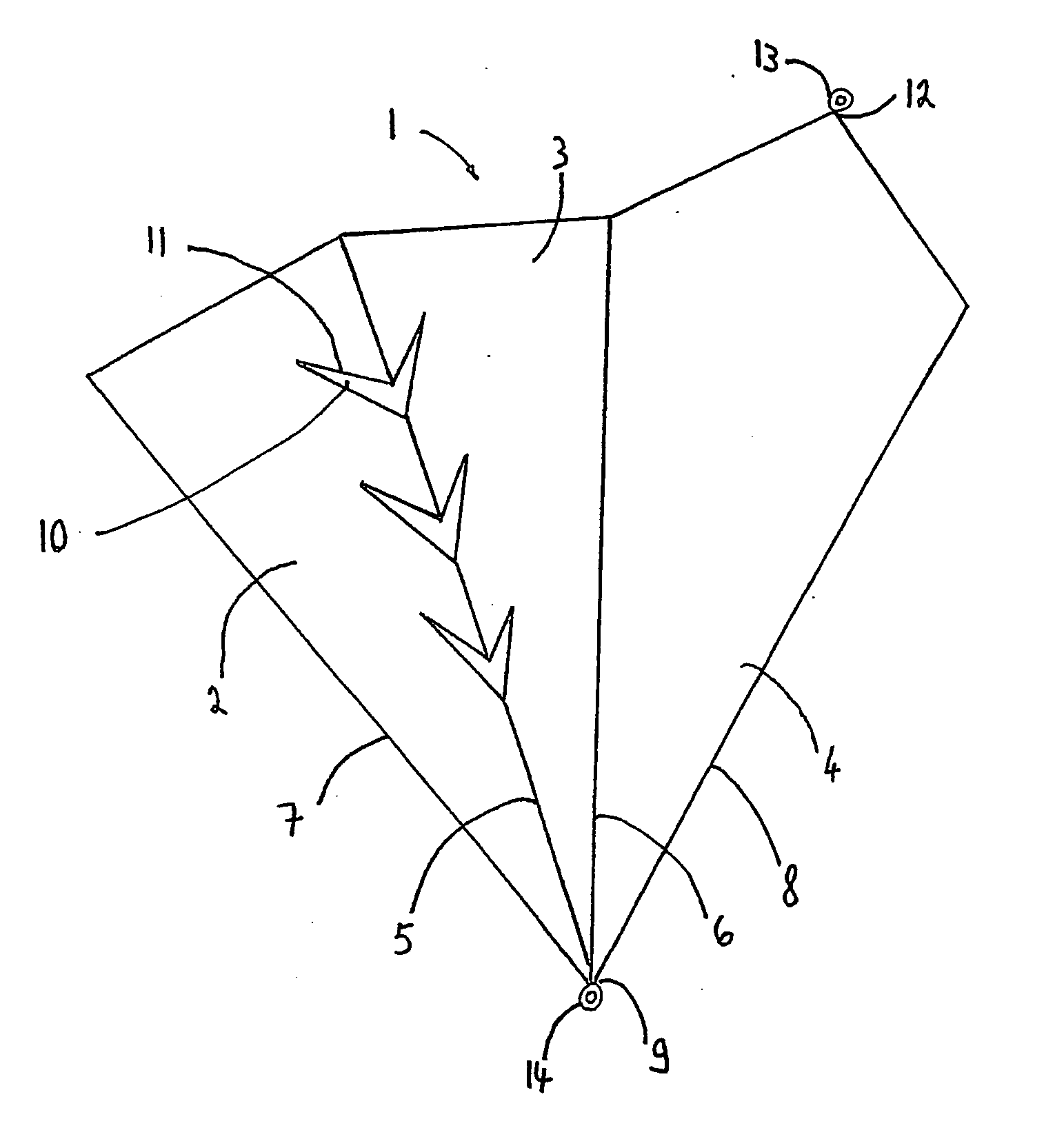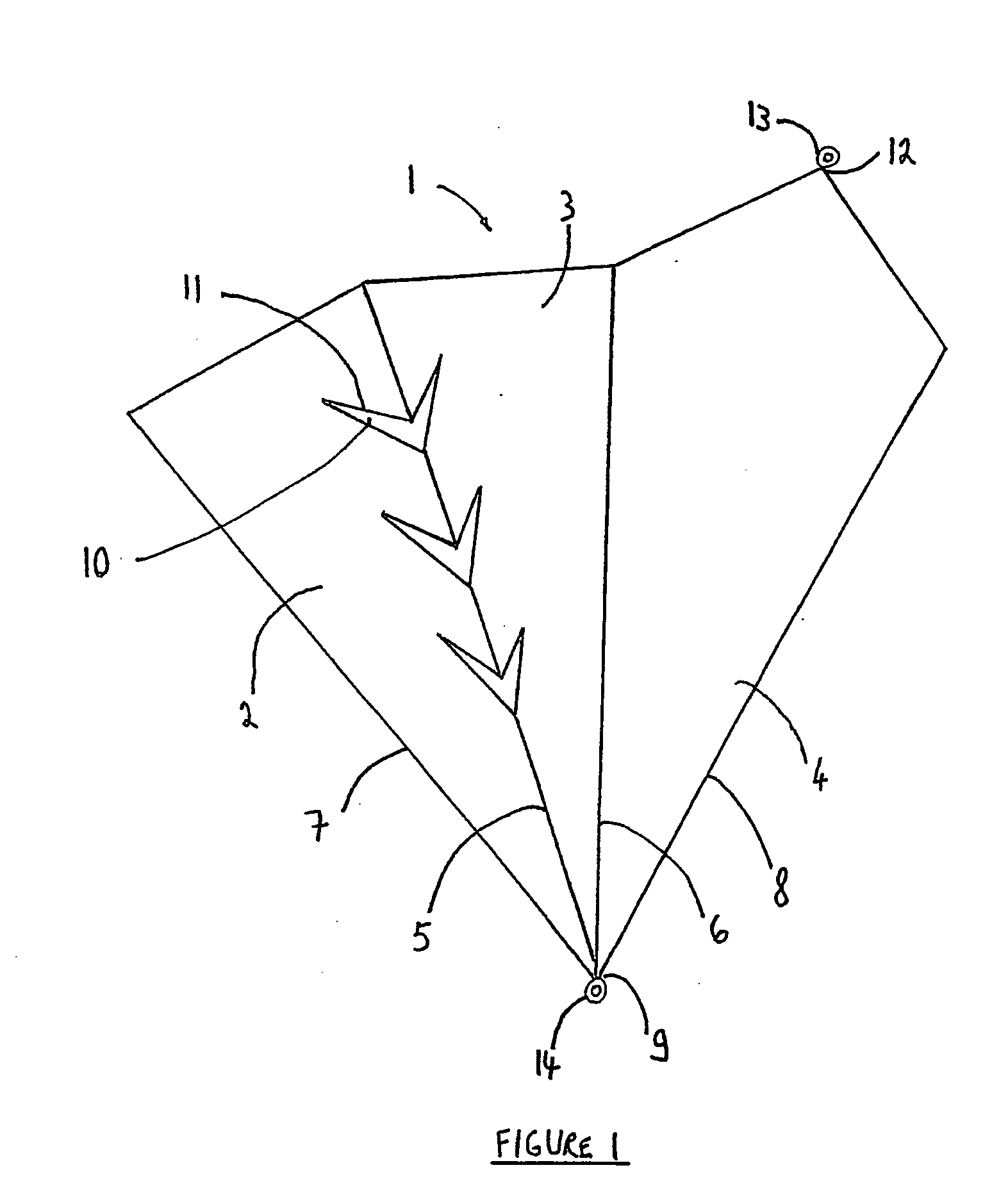Flower container
- Summary
- Abstract
- Description
- Claims
- Application Information
AI Technical Summary
Benefits of technology
Problems solved by technology
Method used
Image
Examples
Example
DETAILED DESCRIPTION OF THE DRAWINGS
[0034]FIG. 1 shows an unfolded sheet 1 which is sectioned into three portions 2, 3 and 4 by two fold lines 5 and 6 which extend from the top edge of the sheet and which converge with side edges 7 and 8 at point 9 of the sheet 1.
[0035] Fold line 5 is interrupted at regular intervals by three V-shaped cut-outs 10 whose edges 11 extend at an angle comprised between 30° and 50° from the fold line. The person skilled in the art will select an appropriate number of cut-outs to meet his requirements of flexibility for a given container.
[0036] Portion 4 of the sheet 1 is the surface which is designated to run against the back and / or shoulder of the user. This portion projects beyond the length of the other two portions 2 and 3 in the shape of a triangle whose edges converge at a higher extremity 12.
[0037] A first ring 13 is attached to sheet 1 at point 12 of the sheet by any appropriate method selected by the person skilled in the art from any known a...
PUM
 Login to View More
Login to View More Abstract
Description
Claims
Application Information
 Login to View More
Login to View More - R&D
- Intellectual Property
- Life Sciences
- Materials
- Tech Scout
- Unparalleled Data Quality
- Higher Quality Content
- 60% Fewer Hallucinations
Browse by: Latest US Patents, China's latest patents, Technical Efficacy Thesaurus, Application Domain, Technology Topic, Popular Technical Reports.
© 2025 PatSnap. All rights reserved.Legal|Privacy policy|Modern Slavery Act Transparency Statement|Sitemap|About US| Contact US: help@patsnap.com



